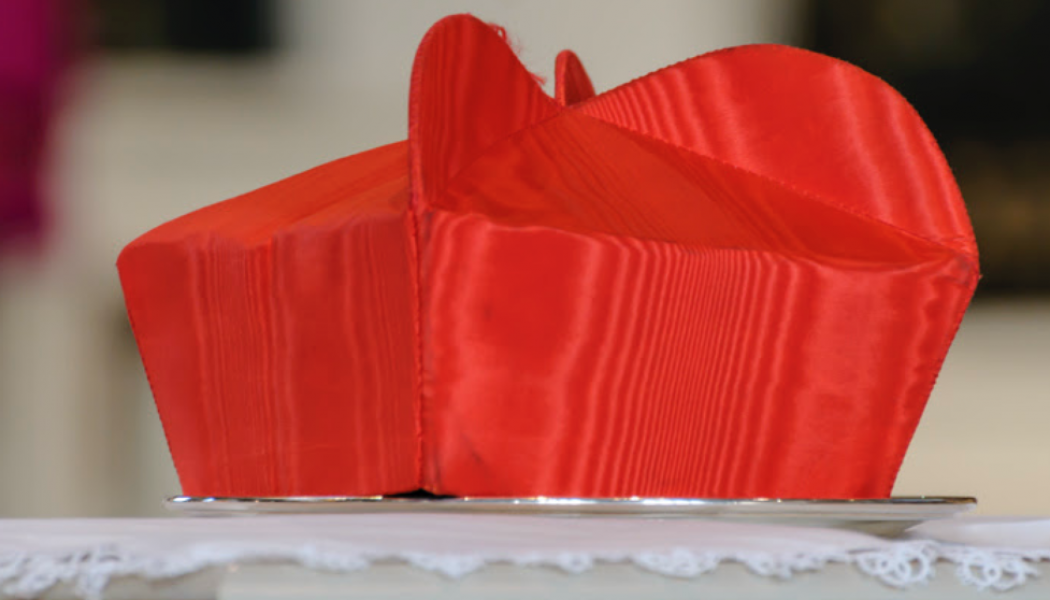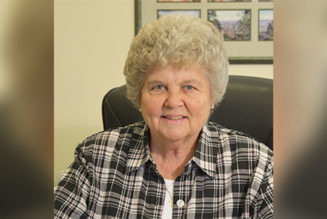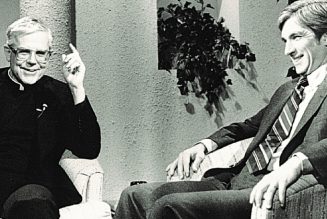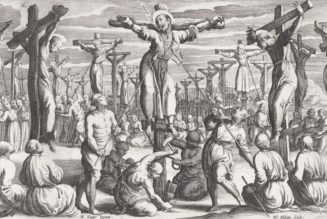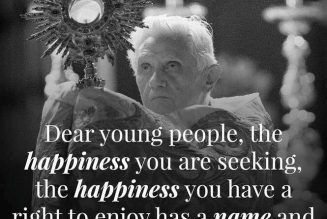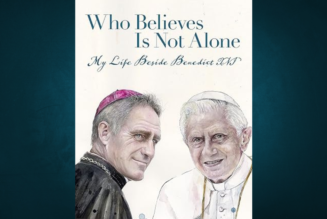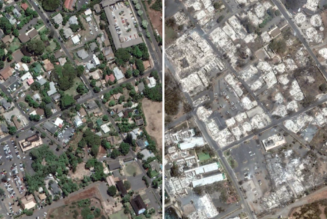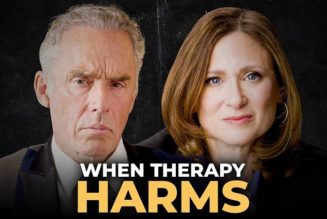

“Team Ted.”
You may be familiar with this term, if you are a longtime follower (several decades, perhaps) of the hellish soap opera surrounding the life and career of fallen cardinal Theodore “Uncle Ted” McCarrick.
But if you followed the McCarrick story in the mainstream press, this is not a term that you would know — for logical reasons. The same is true if you read media reports about the Vatican’s long-awaited investigation of the sins and crimes of McCarrick (click here for a .pdf file of the 450-page report).
“Team Ted,” you see, was a nickname give to a circle of journalists who depended on McCarrick as one of their prime doors into life in the American Catholic church and Vatican affairs, in general. Especially during his heady years as the archbishop of Washington, D.C., McCarrick was the unappointed voice of the U.S. Catholic establishment.
One of the key themes in this week’s “Crossroads” podcast (click here to tune that in) is that this journalistic “Team Ted” concept could also be used in an ecclesiastical context. According to McCarrick, he was a team captain, bridge-builder and kingmaker among his brother bishops, archbishops and cardinals. That leads to some big unanswered questions that loom over the Vatican report and the press coverage it has received, so far.
But first, let’s back up to 2004 and a fawning profile of McCarrick that ran in The Washingtonian under this dramatic double-decker headline:
The Man In The Red Hat
With a Controversial Catholic in the Presidential Race, the Cardinal Is Seen by Many as the Vatican’s Man in Washington — and He May Play a Big Role in the Selection of the Next Pope
The controversial Catholic, of course, was Sen. John Kerry and, behind the scenes, McCarrick worked to protect the candidate’s Catholic bona fides from attacks by conservative Catholics. The issue, as always, was whether this pro-abortion-rights champion could continue to receive Holy Communion. That’s a long, complicated story that may — soon — be relevant once again with President-elect Joe Biden heading into the White House.
Journalists played a crucial role in that dance between McCarrick and Kerry, which raises this question: Which member of the Catholic establishment will play the McCarrick role for Biden? We will see.
Here is the original “Team Ted” reference, at the end of a long, crucial passage in the Washingtonian:
David Gibson, author of The Coming Catholic Church and a religion reporter who has covered the Vatican and knew McCarrick for the 18 years he was Archbishop of Newark, describes him as a “pope maker.” Over the years, Gibson says, McCarrick “has been the Pope’s point man on international issues, developing a number of international political contacts, including important ones in the church hierarchy.”
McCarrick’s travels for the Vatican have taken him through Asia, Africa, Europe, and South America. Most of the cardinals haven’t traveled as much and don’t know many of the other cardinals. They will look to McCarrick to help bring them together behind a candidate. “He will have an important say on who the new pope will be,” Gibson says.
Much of McCarrick’s work for the Vatican has taken place behind the scenes, but not all of it. Shortly after being elevated to cardinal, he was in Rome with other American cardinals discussing the sex-abuse crisis that was roiling the Church. It was McCarrick who emerged from the meetings to face the media in St. Peter’s Square. McCarrick says that he got the job because the other cardinals “can run faster than I do.” Actually, he was asked to talk because of his experience, ease, and rapport with the media. Some reporters who covered him in Rome became such fans that they were known as “Team Ted.”
The other “Team Ted”?
The red-hat version of this teamwork briefly surfaced in a famous 2013 speech McCarrick gave at Villanova University, in which he discussed (at the 18-minute mark) his networking activity ahead of the election of Pope Francis.
<div class="sqs-block video-block sqs-block-video" data-block-json="{"blockAnimation":"none","layout":"caption-hidden","overlay":true,"description":{"html":"Cardinal Theodore McCarrick is Archbishop Emeritus of Washington, DC, and currently counselor to the Center for Strategic and International Studies. Born in …"},"hSize":null,"floatDir":null,"html":"\n","url":"https://www.youtube.com/watch?v=b3iaBLqt8vg&feature=emb_logo","width":854,"height":480,"providerName":"YouTube","thumbnailUrl":"https://i.ytimg.com/vi/b3iaBLqt8vg/hqdefault.jpg","resolvedBy":"youtube"}” data-block-type=”32″ id=”block-yui_3_17_2_1_1605278351132_64684″>
All along, there have been two crucial questions about the McCarrick era in American Catholic life.
FIrst, who were the Catholic leaders in New York City-Newark, N.J., who promoted him as a priest and then as a bishop as he climbed the ladder of Catholic success? Whose team did McCarrick join in order to make his ascent? Who continued to support him as he lied his way into a cardinal’s vestments?
Second, who were the episcopal members of this other “Team Ted” once he reached power? Who worked closely with him and helped protect him, as rumors spread about his private affairs — past and present — with teen-aged boys, seminarians and priests? Who did McCarrick, acting as a proud kingmaker, help promote into the Catholic hierarchy?
It would, of course, be helpful to know the names of the bishops, archbishops and cardinals who were closest to McCarrick.
If that topic interests you, check out this post (“Uncle Ted’s Social Network“) by Rod “Live Not By Lies” Dreher, which points to an important academic paper by the Catholic social scientist Stephen Bullivant, working with an Australian researcher, Giovanni Radhitio Putra Sadewo. The abstract states:
We argue here that episcopal appointments, culture, and governance within the Catholic Church are ideal topics for [Social Network Analysis] interrogation. This paper presents preliminary findings, using original network data for the Catholic Bishops’ Conference of England and Wales and the United States Conference of Catholic Bishops. These show how a network-informed approach may help with the urgent task of understanding the ecclesiastical cultures in which sexual abuse occurs, and/or is enabled, ignored, and covered up. Particular reference is made to Theodore McCarrick, the former DC Archbishop recently “dismissed from the clerical state”. Commentators naturally use terms like “protégé”, “clique”, “network”, and “kingmaker” when discussing both the McCarrick affair and church politics more generally: precisely such folk-descriptions of social and political life that SNA is designed to quantify and explain.
Dreher noted that this academic paper quoted Bishop Robert Barron, a high-profile auxiliary bishop in Los Angeles, saying:
[I]t seems numerous bishops, archbishops, and cardinals, both in this country and in the Vatican, knew all about McCarrick’s outrageous behavior and did nothing in response to it; or, rather worse, they continued to advance him up the ecclesiastical ladder, from auxiliary bishop, to bishop of a diocese, to archbishop, and finally to cardinal. Even after he resigned from his post in Washington, DC, […] McCarrick continued to be a roving ambassador for the Church and a kingmaker in the American hierarchy – again, while everyone knew about his disturbing and abusive tendencies.
The social-networking paper shows that McCarrick was, to be blunt, connected to almost everyone in Catholic power — but some men more than others.
So who would have been a position to observe, day after day, how McCarrick lived his life and went about his business? Obviously, bishops in New York and New Jersey would have been big players in this drama.
The Vatican’s McCarrick report notes that a legendary Catholic conservative, the late Cardinal John O’Connor warned St. Pope John Paul II, as he prepared to move McCarrick to the strategic throne in Washington, D.C., and on to the College of Cardinals (click here for op-ed by Elizabeth Bruenig at The New York Times). However, four bishops in New Jersey blew smoke at the Vatican when asked to confirm reports about McCarrick. They saw nothing.
Many reporters, including Dreher and our own Julia Duin (see her must-read GetReligion posts here and then here), tried — without success — kept trying to get sources to go on the record about McCarrick’s sins and crimes.
Check out this prophetic 2009 Dreher piece at Beliefnet.com. In it, he quotes the late psychologist and former priest Richard Sipe, a key figure in news coverage of the Boston clergy sexual-abuse scandals. Sipe wrote, describing what he called the “Cardinal McCarrick Syndrome”:
As the documentation from civil and criminal cases erupted from every corner of the States a further element in the dynamic of celibate violation and sexual abuse revealed itself. That is: The pattern and practice of superiors, confessors, spiritual directors, novice masters, and faculty members having sexual exchanges and friendships with seminarians and young priests. Its prevalence in the United States is unquestionable. The legal cases that have been filed against priests who have abused minors are but one source of reliable documentation. Mental health records are another. Most of all the testimony of the abused is substantial, painful, pitiful, and disheartening.
A great deal about this element in the system is well known and also undeniable. The trouble is that it is sealed within the system. Few of the seminarian/priest victims will talk on record. They have everything to loose. Sexually active priests who have no intention of being celibate do everything to cover their tracks.
Who was in a position to know the goods on McCarrick?
Let’s return to an inspirational passage in that work of hagiography published by the Washingtonian. People who know who lives where in Washington, D.C., will find this especially interesting.
Writer David Gibson says McCarrick lives for the Church and is a spiritual man who “can go from diplomat to a monk in the blink of an eye.” …
Instead of residing in the Pastoral Center — where an apartment was available to him but which has all the charm of a Best Western hotel — McCarrick lives on the edge of Kalorama near Adams Morgan. He wanted a more urban environment, he says, and “being cheap,” he found that a former high school and orphanage on California Street, now Our Lady, Queen of the Americas Church parish building, had a fourth floor that was being used for storage. Cleaned out, it made a nice apartment.
The red-brick, four-story building has a daycare center on the first floor, parish offices and the church on the second and third. The top floor has been configured with four bedrooms, a chapel, an office, kitchen, living room, and dining room. McCarrick shares the apartment with auxiliary bishop Kevin Farrell and two priest secretaries.
What happened to Farrell?
First of all, Farrell insists that he never saw anything suspicious about McCarrick’s life and work, during their years together inside the Beltway.
However, Farrell — now a cardinal, by the way — has done well. Back in 2019, as work on the McCarrick report proceeded behind closed doors, there was this strategic news about where Farrell currently ranks in the Vatican hierarchy:
Pope Francis … nominated a new camerlengo, Irish-American Cardinal Kevin Joseph Farrell, prefect of the Dicastery for Laity, Family, and Life, and a former bishop of Dallas.
The responsibilities of camerlengo include overseeing the preparations for a papal conclave and managing the administration of the Holy See in the period between a pope’s death or renunciation and the election of a new pope.
That’s the ticket. Location, location, location.
Enjoy the podcast and, please, pass it along to others.
